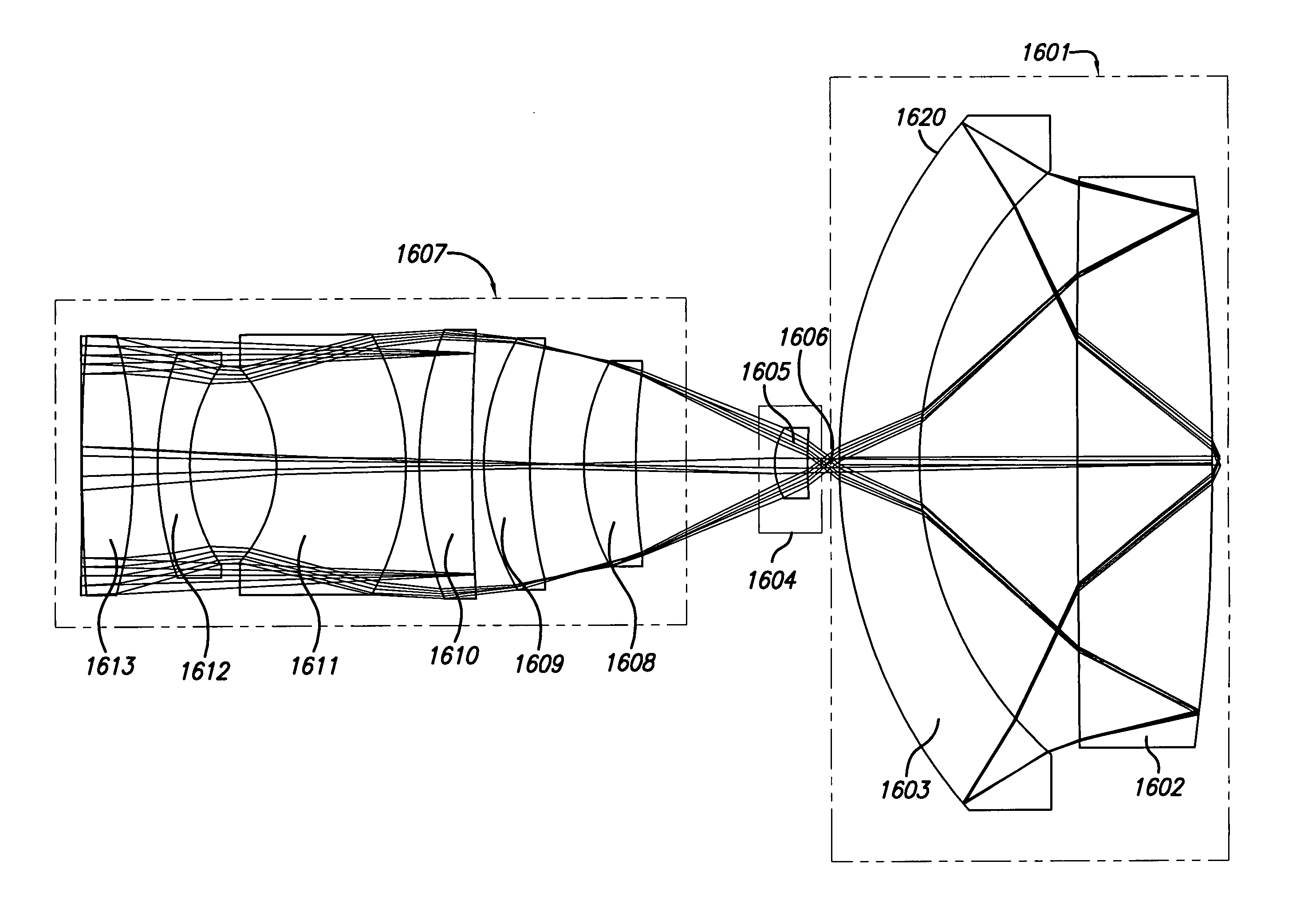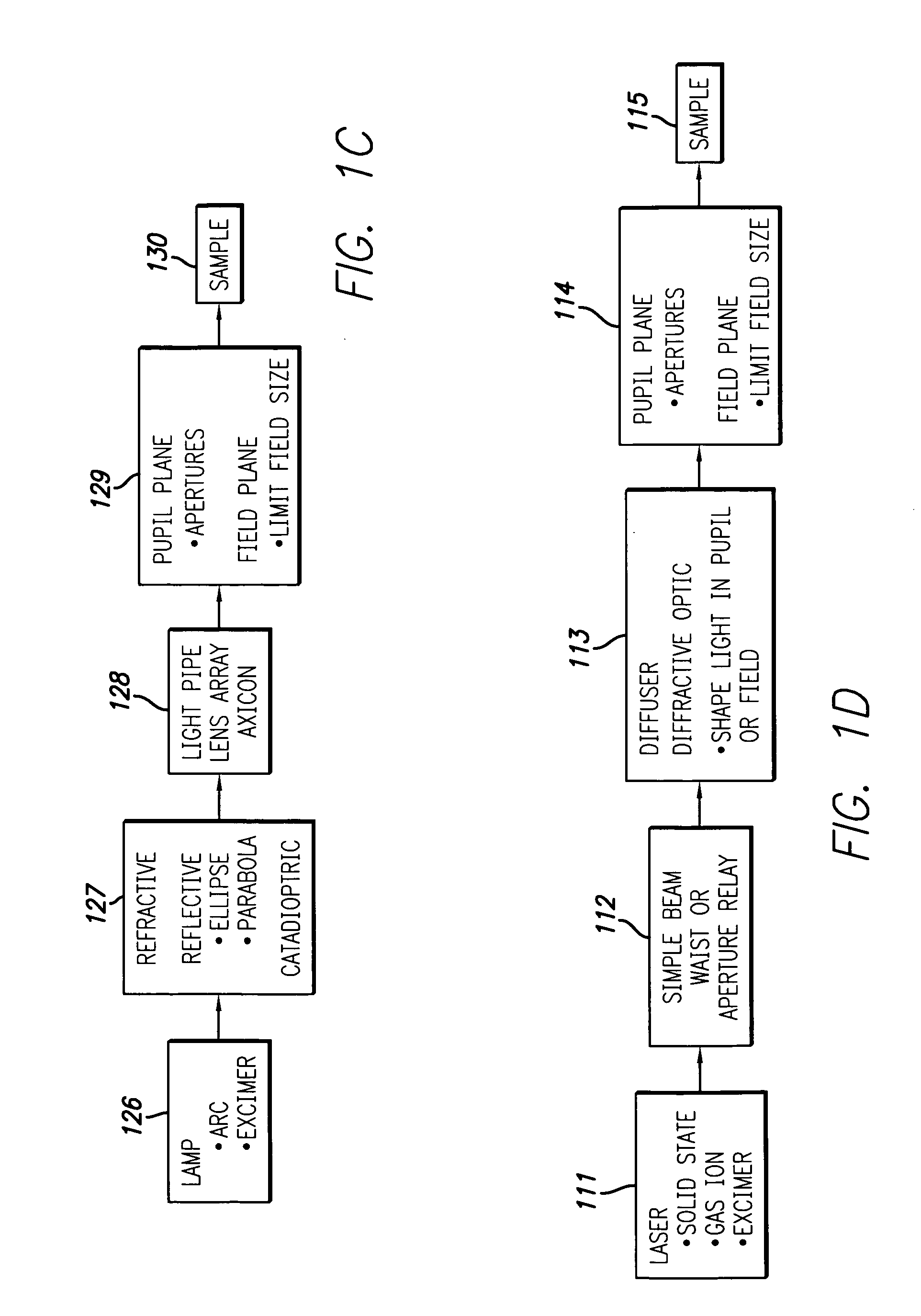Inspection system using small catadioptric objective
a technology of catadioptric objective and inspection system, applied in the field of optical imaging, can solve the problems of high cost, difficult design of uv objective with good correction over field larger than 100 microns with 0.9 na, and limited system based on refractive objectiv
- Summary
- Abstract
- Description
- Claims
- Application Information
AI Technical Summary
Benefits of technology
Problems solved by technology
Method used
Image
Examples
Embodiment Construction
[0069]The inspection system and designs disclosed herein employ an imaging subsystem having generally small size, in particular a small sized objective design, that provides advantages over previous catadioptric designs. The present inspection system provides various components and subsystems that may be employed in accordance with a relatively small objective to provide accurate and high quality scans as compared with previously known systems employing relatively small objectives.
[0070]FIG. 1A illustrates a typical inspection system having an illumination subsystem 101, positioning stage 102, autofocus subsystem 103, imaging subsystem 104, sensor subsystem 105, data acquisition subsystem 106, and data analysis subsystem 107. The objective in the present design is embodied in the imaging subsystem 104 and will be discussed in detail below. In the arrangement of FIG. 1, light travels via the light path shown from the illumination subsystem 101 to the positioning stage 102, the imagin...
PUM
| Property | Measurement | Unit |
|---|---|---|
| wavelength | aaaaa | aaaaa |
| diameter | aaaaa | aaaaa |
| diameter | aaaaa | aaaaa |
Abstract
Description
Claims
Application Information
 Login to View More
Login to View More - R&D
- Intellectual Property
- Life Sciences
- Materials
- Tech Scout
- Unparalleled Data Quality
- Higher Quality Content
- 60% Fewer Hallucinations
Browse by: Latest US Patents, China's latest patents, Technical Efficacy Thesaurus, Application Domain, Technology Topic, Popular Technical Reports.
© 2025 PatSnap. All rights reserved.Legal|Privacy policy|Modern Slavery Act Transparency Statement|Sitemap|About US| Contact US: help@patsnap.com



